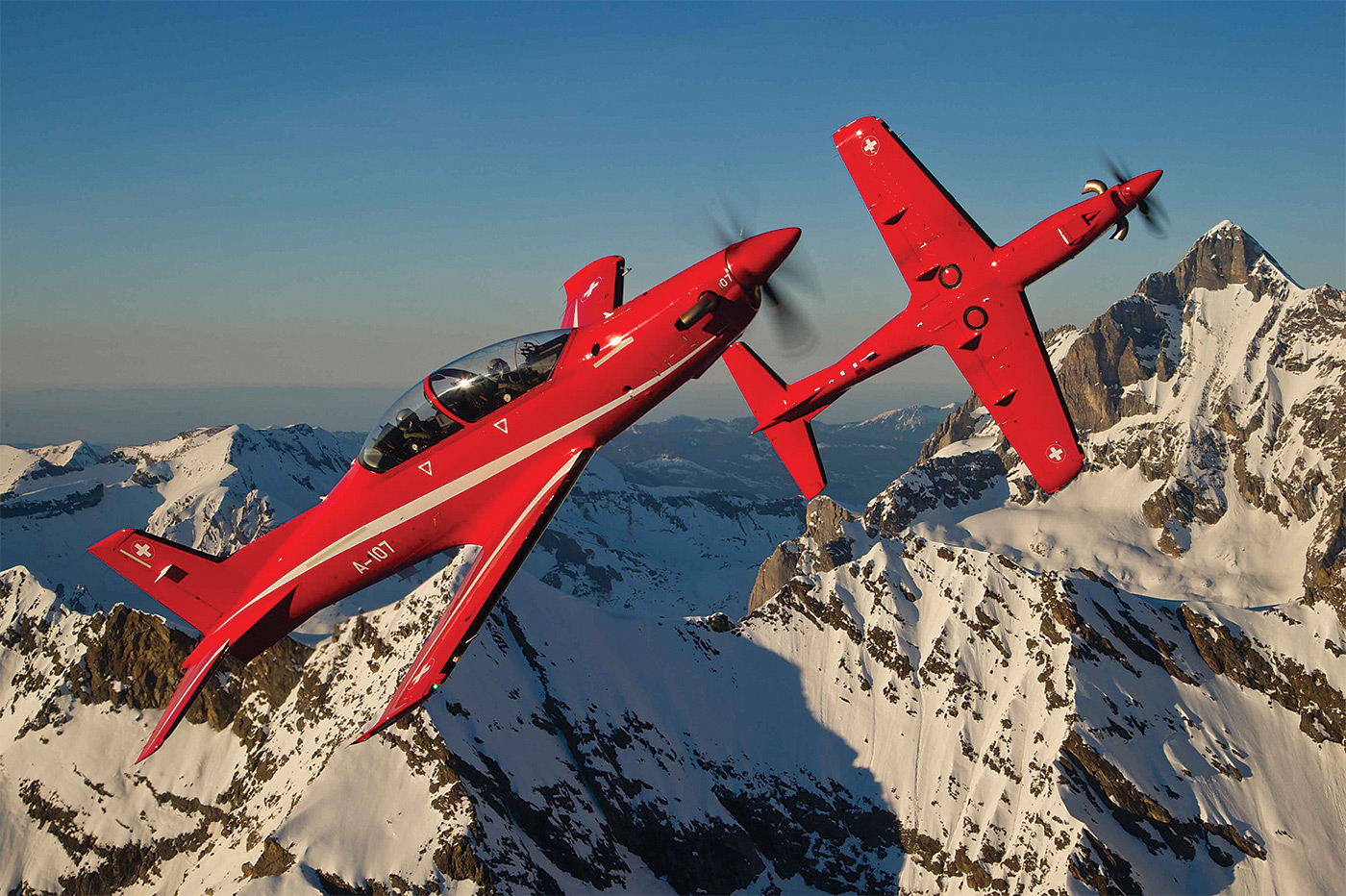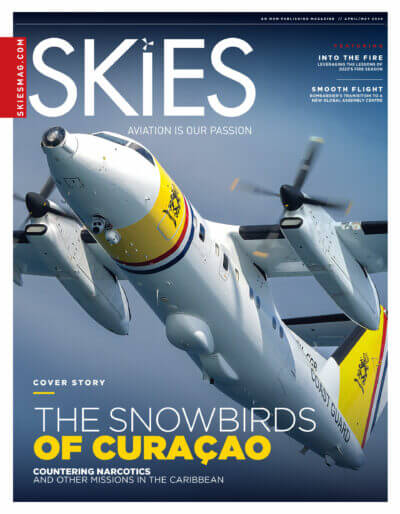Estimated reading time 14 minutes, 41 seconds.
The dogfight was over in seconds. Our radar painted a bogey closing on us from about 20 miles. Selecting the radar to “Track” mode, a tone in our helmets confirmed that a radar-guided missile had locked on the target, and with a squeeze of the trigger we dispatched a lethal message about virtue and democracy. Splash one bad guy.
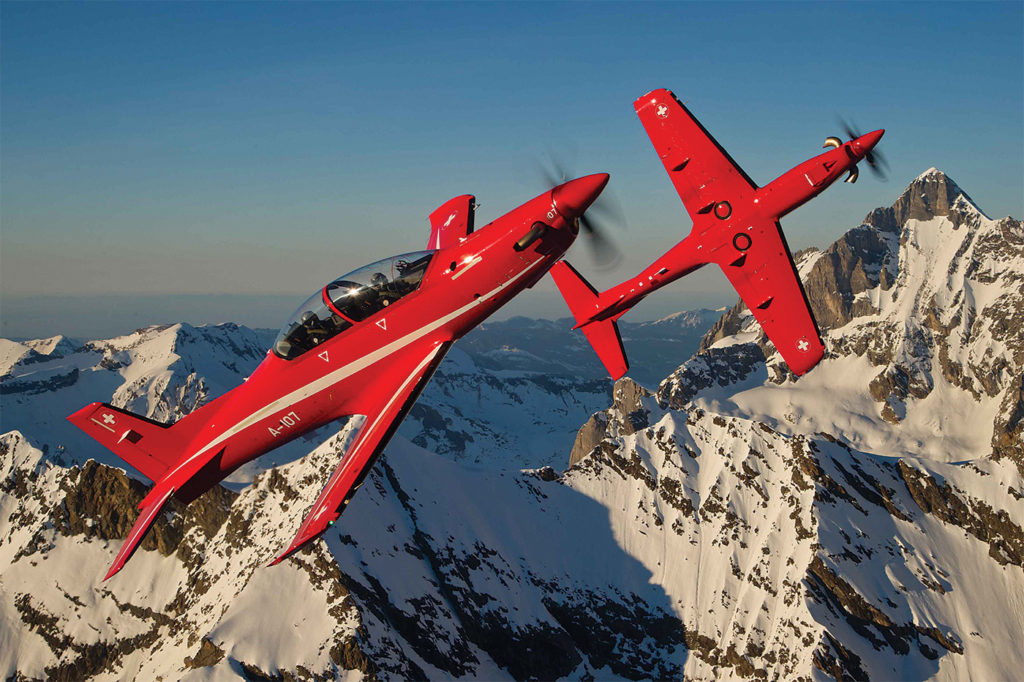
There was something unusual about our air combat victory: there was no bogey, no radar, and no missile. The entire engagement was an elaborate airborne simulation. It was all in a day’s work for the PC-21; Pilatus’ latest concept in pilot training.
Pilatus Aircraft Limited invited Skies to its factory in Stans, Switzerland, to experience something new and innovative in military pilot training. At first, the experience was, frankly, a bit boggling. Would we be flying or were we simulating? Well, both.
Modern technology allows training to be conducted on the ground in simulators, often to a high degree of fidelity but, as any pilot knows, simulators have their limitations, particularly in the realm of dynamic manoeuvring.
With the PC-21, Pilatus has blended the in-air and in-the-box experiences, creating a form of high fidelity, in-flight simulation. It’s a capability that is a game changer in the complex and expensive business of military pilot training.
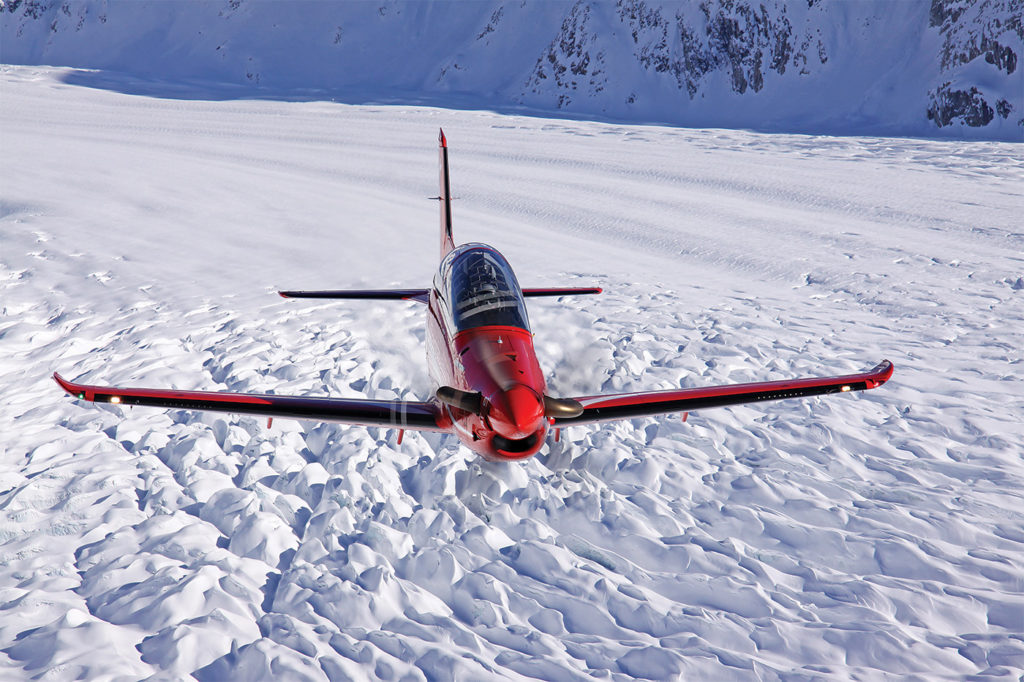
What’s new in flight training?
Pilatus lists the PC-21’s design objectives as increased performance, enhanced maintainability, lower operating costs and added capability.
While it scores points on all counts, the “added capabilities” are at the heart of what makes the PC-21 unique, in that those capabilities include full-spectrum mission-systems simulation embedded within the aircraft.
As combat aircraft become more sophisticated, they become easier to fly; however, increased complexity of the sensors, weapons, countermeasures and tactics make them similarly harder to fight. Introducing tactical systems and procedures early in the training makes sense. The collateral benefit of doing so in a turboprop PC-21 versus an operational combat aircraft also makes economic sense.
Pilatus touts the PC-21 as a trainer that can take an ab initio pilot from their first flying lesson through fighter lead-in training. To say I was skeptical is an understatement. In my experience, a trainer that is easy enough for a new student to fly would be ill-suited for advanced air combat training. Similarly, an aircraft with sufficient performance and systems to credibly perform air combat would be too “hot” for a student. Military budget managers might eschew operating multiple types, but no single type would suffice.
Pilatus was eager to prove otherwise. Two sorties were scheduled for my visit. For the first, I would ostensibly be an ab initio student. My plan was simply to strap-in and fly the PC-21, reasoning that a good trainer should be sufficiently conventional and forgiving that it shouldn’t present any obstacles to a trained pilot. Admittedly, I learned to fly in an analog environment several decades ago, but that shouldn’t be an impediment, right?
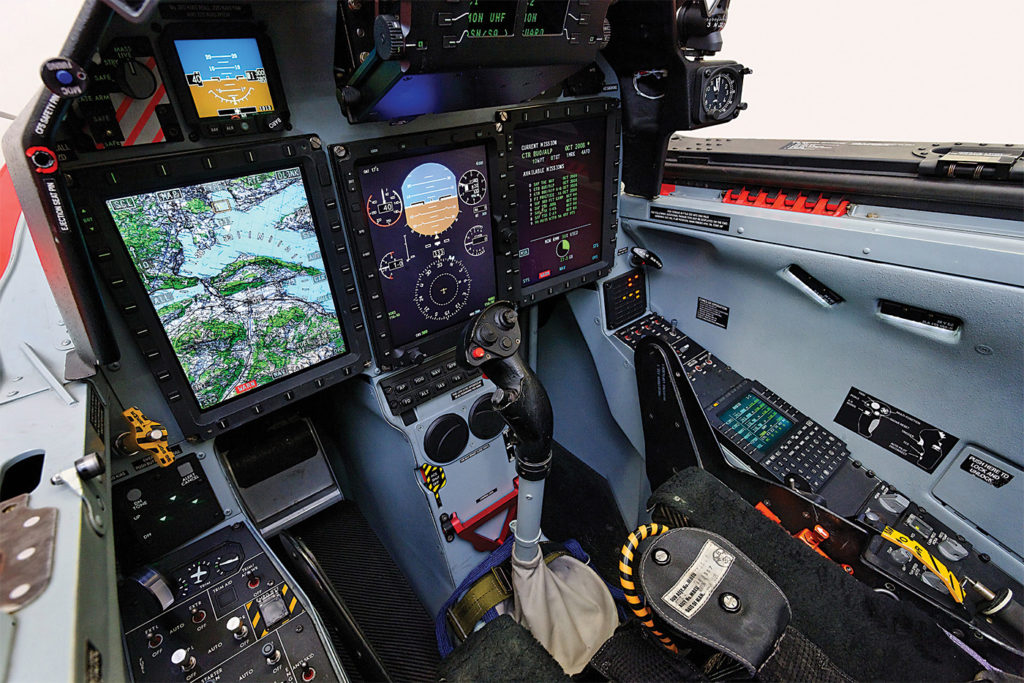
My PC-21 training began in the simulator, a fixed-base device which replicates the aircraft with sufficient fidelity to habituate me to normal procedures, systems and basic handling. An hour in the “box” left me feeling ready to strap in and find the important levers and switches – provided that I had adult supervision. I would fly my first sortie with Pilatus’ experimental test pilot Matthew “Fish” Hartkop, an ex-U.S. Navy F/A-18 pilot.
Teaching the fundamentals
Strapping into the Martin-Baker ejection seat – survival kit, leg restraints, oxygen hose, G-suit, communications, harnesses – puts one in a tactical frame of mind.
The cockpit layout roughly emulates an F-18, with a heads-up display, three reconfigurable 6×8-inch portrait-style displays and a fighter-style up-front control panel as the interface for avionics and simulated weapons systems. The stick and throttle emulate a fighter’s hands-on-throttle-and-stick (HOTAS) design. The cockpit layout was snug and utilitarian.
Hartkop talked me through the start-up of the digitally controlled engine, and we were ready to taxi in about three minutes.
The mechanical nosewheel steering was tight and responsive, with only a touch of brake required to regulate speed. The field of view from the front seat through the single-piece canopy was expansive, and I was beginning to think that the PC-21 was no big deal.
Then I opened the throttle. To tame propeller torque, full throttle is scheduled to deliver “just” 1080 HP below 80 knots indicated airspeed (KIAS), increasing to its rated 1600 HP above 200 KIAS. Initial acceleration was brisk behind 1080 HP, and remained strong as we cleaned up landing gear and flaps and accelerated to the scheduled 190 KIAS climb speed, where we were rewarded by a spectacular 3,900 foot-per-minute initial climb rate.
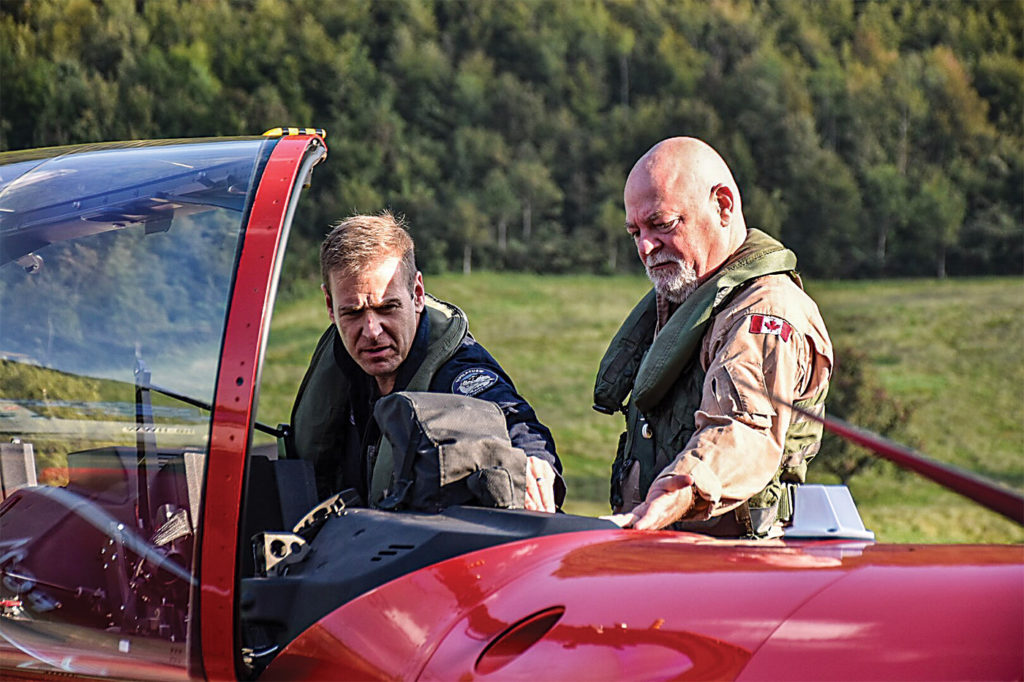
In addition to taming the natural directional instability of a propeller, the speed-scheduled power limits gave the PC-21 the characteristic long slow push of a pure jet, allowing me, as Hartkop put it, to “quickly forget about the propeller.”
Aerobatics are a productive way to get acquainted with a new airplane. Flying in the highly segmented Swiss airspace was a bit like learning to swim in a bathtub! Most of our aerobatics seemed to occur out of necessity as we bounced off the corners of the tiny country, but I was in pilot heaven.
Friendly handling
I found the simple, reversible, mechanical flight controls – with hydraulically-boosted ailerons augmented by roll spoilers – to be light, crisp and predictable. The published maximum roll rate of 200 degrees per second is sufficient to replicate tactical manoeuvring.
Wind-up turns to for ‘g’ displayed a well-balanced stick-force gradient estimated at 10 pounds per ‘g.’ Overall, the control harmony and response of the PC-21 were delightful throughout the flight envelope.
Cruising in slow flight at 95 KIAS in the landing configuration, I did some crisp roll attitude capture tasks, expecting to need copious rudder co-ordination, but the PC-21 rewarded me with cleanly decoupled roll response. The published stalling speed of 81 KIAS makes the PC-21 a fairly hot single-engine airplane, but the stall characteristics in both the clean and landing configuration were entirely benign, with a distinct pitch break at the stall, retaining full lateral control throughout.
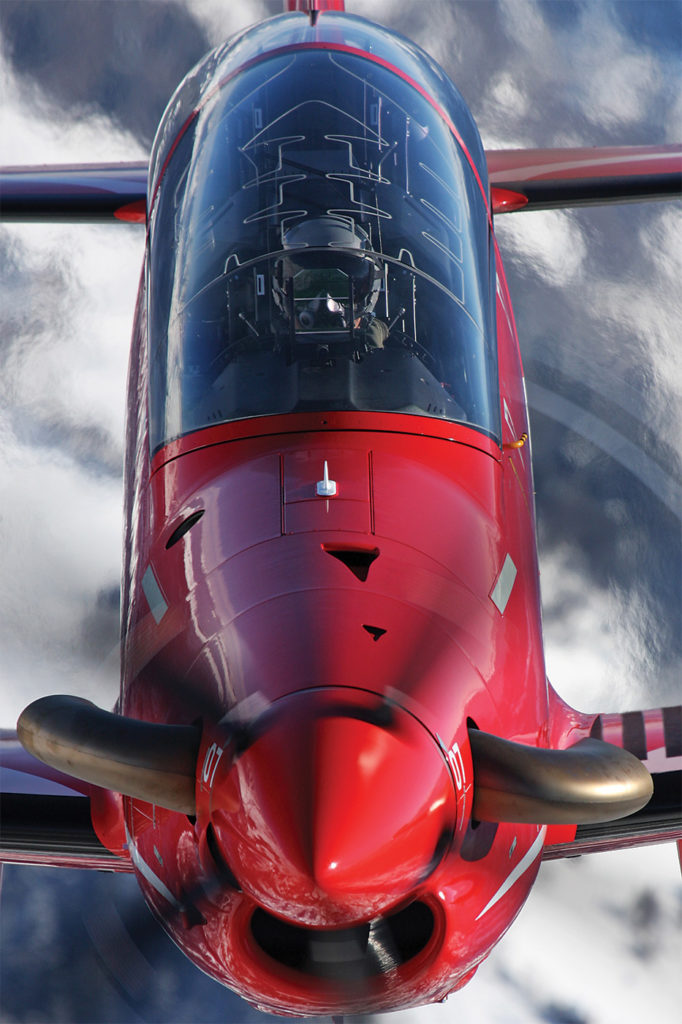
Having marvelled at how “unpropeller-like” the airplane was at low speed, Hartkop suggested a similar demonstration at high speed. We shoved the throttle forward, unleashing all 1600 HP as I accelerated at low level up a Swiss alpine valley. I saw 294 KIAS, which equates to an impressive 323 knots true airspeed. With 1,200 pounds usable fuel onboard, low level fuel flow averages 700 pounds per hour. At higher altitudes, Hartkop uses 300 to 400 pounds per hour as a fuel flow rule of thumb.
Retaining a turboprop powerplant is a decision driven by economy, yet the expectation is that students will graduate to fly high-performance tactical jets. That is, the propeller is a training distraction that is ideally transparent to the budding jet pilot.
In an effort to mask its effects, the PC-21 features a sophisticated computerized rudder trim aid device (TAD) that moves the rudder trim tab based on inputs of airspeed, engine torque, angle of attack, and load factor. The trim aid device kept the aircraft co-ordinated as we accelerated, as evidenced by a slow migration of the rudder pedals underfoot, but pilot workload to co-ordinate that big propeller was effectively nil.
Something else I wouldn’t have noticed unless Hartkop mentioned it: the ride. It was like rumpled velvet. The sky around us was a roiling mess of torn cumulus, so I could see that the conditions were turbulent, but the PC-21’s high wing loading gave us a ride that could only be described as “jet-like.”
We returned via a vectored-ILS at the nearby Swiss Air Force base at Emmen, before returning to work the airfield at Stans. Equipped with a glass cockpit, autopilot, dual civil-certified flight management systems, dual inertial reference units, dual GPS and instrument landing system (ILS) receivers, the PC-21 is very well equipped for instrument flight training.
Hartkop let me loose in the circuit, and with his prompting I did a suitable job with several touch-and-go landings, a closed pattern, a flapless approach, and a practice forced landing.
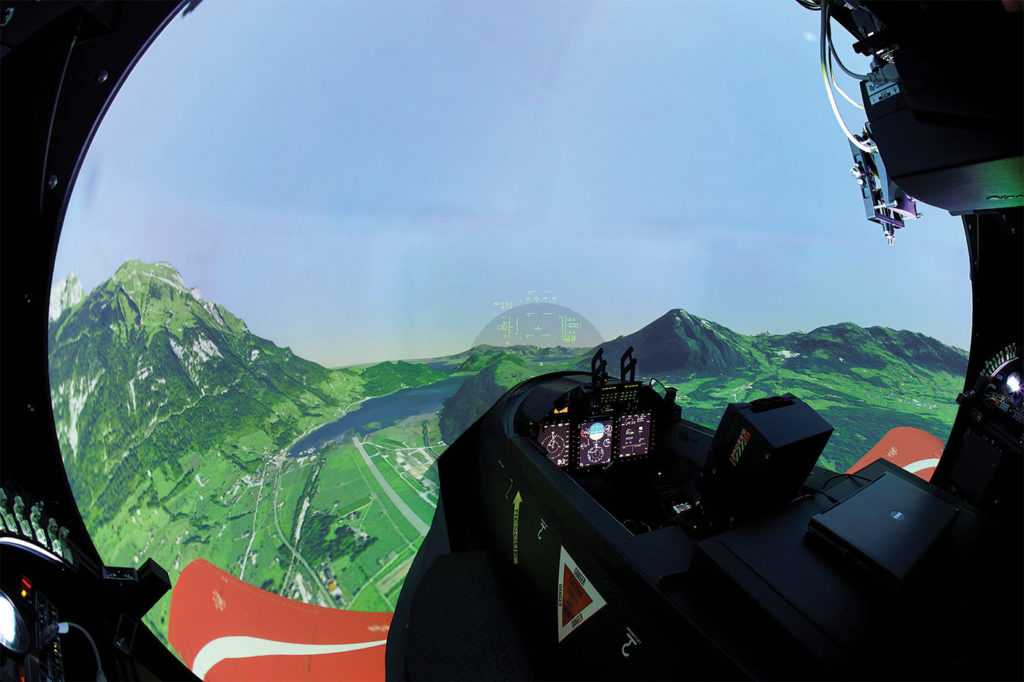
My experiment was to simply strap into the PC-21 and safely take it flying, figuring those first impressions would reveal any quirks awaiting the new trainee. After about 90 minutes in the front seat of the PC-21, my growing confidence with the aircraft was ample proof of its merits as a trainer.
Meet the PC-21
Pilatus has been building airplanes since 1939, and is perhaps best known today for the success of its PC-12 single-engine turboprop design. However, it has long been a key player in the military training market with its PC-7 and PC-9 designs, of which over 800 have been delivered, as well as licensed variants of the PC-9, called the T-6 Texan/Harvard II.
The PC-21 is an entirely new design, although by this point a mature one, having first flown in July 2002. As a trainer, the PC-21 seems exceptionally well equipped, including a heads-up display (HUD), airbrakes, health and usage monitoring system (HUMS), single-point refuelling, cockpit pressurization, onboard oxygen generating system (OBOGS) and anti-skid brakes. Pilatus claims that the turn-around between flights can be performed in 12 minutes by a single technician.
The aircraft features a single digitally-controlled 1,600 horsepower (HP) Pratt & Whitney Canada PT6A-68B engine that drives a five-blade graphite propeller. For reference, that’s a better pounds-per-horsepower ratio (power loading) than a Second World War P-51 Mustang, so rather satisfying performance might be anticipated. It’s maximum operating speed (Vmo) is 370 KIAS (0.72 Mach).
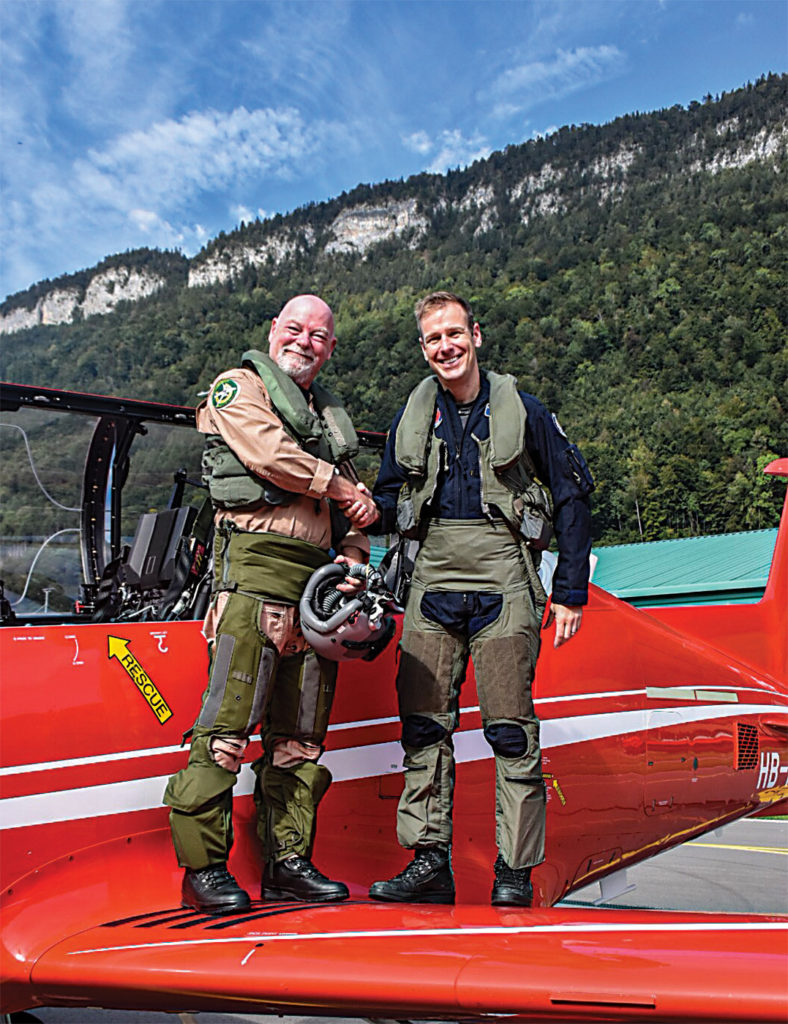
Planning for combat
Our second mission was to demonstrate the PC-21’s simulated tactical capabilities in a composite air-to-air and air-to-ground mission. I flew with Pilatus test pilot Reto “Obi” Obrist.
Mission planning requires downloading topographic and tactical data to a removable hard drive, called a “brick.” Alternatively, an instructor in either seat in the PC-21 can enhance the scenario by assuming a degree of real-time control of the threat aircraft. It also records DATA for post-flight playback, along with HUD video, cockpit audio, and a reconstruction of all the players in the three-dimensional battle space.
“Fox three”
I rode the back seat as Obrist demonstrated how quickly he could make the PC-21 emulate a multi-mission fighter. Using the instructor’s pages on the MFD, he “loaded” imaginary missiles onto imaginary rails on our very real aluminum wings, adding a few notional free-fall bombs and some virtual chaff and flares until we were virtually bristling with simulated firepower.
We launched in a two-ship formation of PC-21s, with Hartkop departing first in the “threat” aircraft. Our aircraft split to a distance of about 30 miles and then turned toward each other. Hartkop’s aircraft was continually visible on the multi-function display, based on real-time high-bandwidth datalink. Obrist obligingly explained that he had selected a “six bar scan” on the F/A-18 radar emulation. I was quickly recalling that I don’t understand fighter pilot talk, but the HUD symbology indicated that a weapon had locked onto Hartkop’s aircraft at a range of 16 miles, allowing Obrist to squeeze the trigger.
“Fox 3,” he called on the radio, indicating a radar-guided missile shot. Hartkop was dead, sort of, until Obrist “reset” him for the next engagement.
We did four air-to-air engagements. Our first engagement was simply a missile shot, but it let me experience the basic functionality of the F/A-18’s AN/APG-73 radar and its associated weapons systems in a very realistic setting. The training scenarios proceeded incrementally.
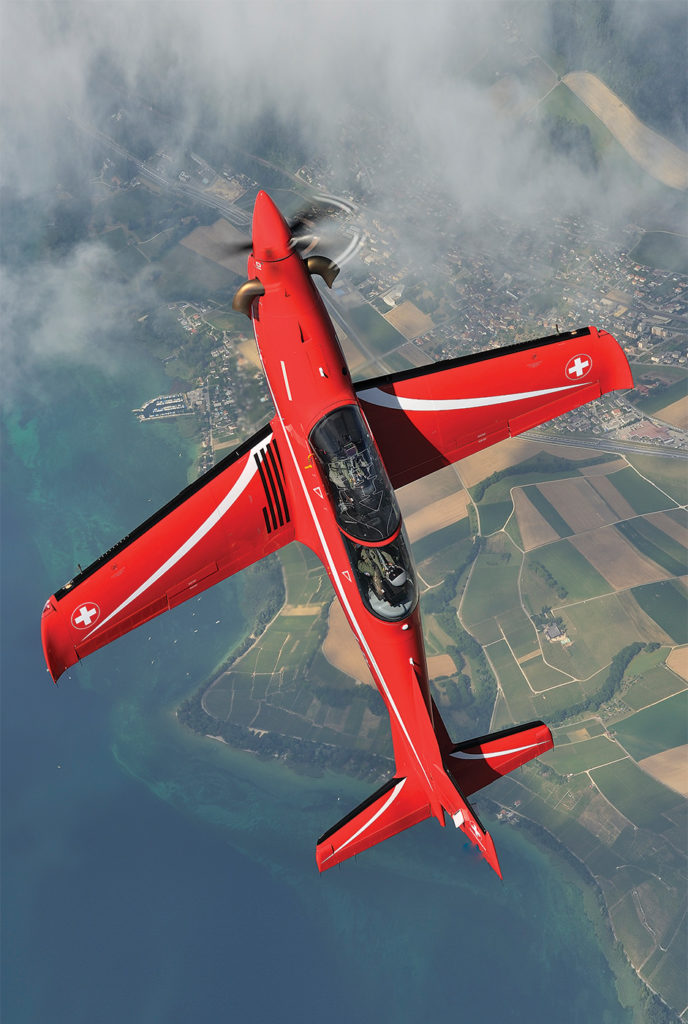
We set up for another engagement, but this time Hartkop seemed inclined to shoot back. The warning tone of his missile trying to lock onto our aircraft sent us into a defensive manoeuvre with some additional radar work to widen the sector scan to obtain a weapons lock. Things were getting interesting. On the next, a simulated missile was launched against us, requiring Obrist to employ the radar countermeasures. We survived.
Obrist made no claims about the fidelity of the radar or weapons simulations. The performance and behaviour of the tactical systems relies upon unclassified commercial models of weapons and sensors that Pilatus has integrated into the aircraft.
Exact realism isn’t the objective, however. Rather, the goal is effective training. The purpose of the tactical scenarios is to teach the pilot to behave appropriately and to do so in a setting where their judgment, timing and skills are critical to the outcome. The only thing missing from complete realism were live warheads.
Interestingly, some simulation models have been modified to enhance training effectiveness. For example, Hartkop explained that in the interest of improved training, the onboard dynamic model of the air-to-air missiles needed to be slowed down to give realistic time-of-flight between turboprop trainers engaging at slower speeds and shorter distances than actual fighter aircraft.
Bombs without the boom
There is a lovely lakeside town south of Stans that needed a bit of friendly bombing, so we split our formation, set the radar to Ground Mode, and set course for the target.
I was impressed by the air-to-air radar simulation capability, but utterly gobsmacked when Obrist selected the air-to-ground mode. The synthetic radar display depicted a pseudo-photographic image of the terrain ahead.
Let’s take a moment to appreciate what we were seeing: In the absence of an actual radar, the radar return was simulated; meaning that the software “knew” the shape and texture of the local terrain, “knew” the characteristics of an AN/APG-73 radar beam, including all the fancy features and modes such as Doppler beam sharpening, “knew” where the radar beam was in space, and calculated what the reflected radar image should look like under those conditions. Impressive!
Our navigation system put a waypoint near the target, allowing Obrist to visually identify and update the target designator during our low-level ingress to the target. The HUD guided us through a pop-up manoeuvre to the continually computed release point (CCRP), where it simulated release of the weapon. The PC-21 can simulate – and even score – gun, rocket or bomb delivery.
Taking simulation airbourne
The PC-21 wasn’t a fighter, but you couldn’t tell from where I was sitting. Taking stock of the experience, the PC-21 isn’t an airplane and it isn’t a simulator, but rather combines the best aspects of both to provide a unique training capability.
It can’t deliver a weapon, but if the need ever arises the PC-21 can teach you how.
Robert Erdos is a contributing editor for Skies magazine. He is a graduate of the U.S. Naval Test Pilot School and a retired professional test pilot. Also an aviation enthusiast, his spare time activities include displaying vintage airplanes and flying his RV-6 kitplane.
